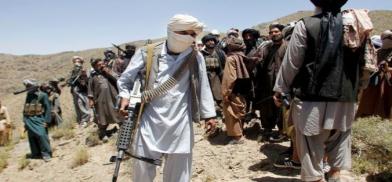Osama’s son met top Taliban leaders after the fall of Kabul; terrorists now enjoy greater freedom in Afghanistan: UN report
The Taliban haven’t taken any steps to limit the activities of foreign fighters; they, in fact, enjoy greater freedom under them

Weeks after the Taliban stormed to power in Kabul last year, Osama Bin Laden’s son Abdullah met the Taliban leaders in October in Afghanistan, a report by the UN Sanction Monitoring team said, noting the Islamist group’s return to power has “raised concerns globally” about regrouping of terror groups.
“The return of the Taliban to power in Afghanistan during the reporting period (June- December 2021) has raised concerns globally about the possibility of it becoming a safe haven for Al-Qaeda and its affiliates in the country,” UN’s Analytical Support and Sanction Monitoring Team on ISIS and al-Qaeda said in its latest report this week.
The report, which was submitted to the United Nations Security Council (UNSC) this week, compiled the intelligence assessment of the movement, outlook of global terror groups like ISIS and al-Qaeda and their affiliates.
“Some of its [al-Qaeda’s] closest sympathizers within the Taliban now occupy senior positions in the new de-facto Afghan administration,” the sanction monitoring team noted in its 29th report, adding that al-Qaeda is boosted by the development.
The Haqqani Network, known to be sharing close ties with al-Qaeda, has emerged as one of the most important factions with the Taliban’s interim government, and control important positions like interior and intelligence departments.
The report also noted that there were “no recent signs” that the Taliban has taken “any steps to limit the activities” of foreign terrorist groups—in contrast to their promises of not letting the Afghan land be used for staging attacks on other countries
“Terrorist groups enjoy greater freedom there than any time in recent history,” the report said, but added, “member states (reporting countries) have not reported significant movements of foreign fighters to Afghanistan.”
AQIS (al-Qaeda in the Indian subcontinent) is estimated to have between 200-400 fighters in Afghanistan, mainly drawing their most fighters from India, Pakistan, Bangladesh, Myanmar, and Afghanistan. The group’s fighters, it noted, had “fought alongside the Taliban” last year in ousting the former Afghan government.
Significantly, the monitoring team noted that the al-Qaeda has maintained a “strategic silence” since 31 August 2021, when it congratulated the Taliban on its victory—a move, the report said, “likely an effort not to compromise the Taliban’s efforts to gain international recognition and legitimacy”.
Significantly, the report said the security landscape has changed dramatically since August last year, when the Taliban return to power, toppling the US-backed Afghan government. The strength of the ISIS-K, a terror group that has been fiercely challenging the Taliban, has risen dramatically, with the group having close 4000 fighters now in Afghanistan.
The Taliban’s release of prisoners from across the country during the final weeks of the fight had helped the ISIS-K replenish their rank and file. Despite controlling limited territory, especially in eastern Afghanistan, the group has developed the capacity to execute complex attacks across Afghanistan.
On the Tehreek-e-Taliban Pakistan (TTP), a group that shares close fraternal and ideological ties with the Afghan Taliban, the report estimated close to 5000 fighters of the group are currently based in Afghanistan. Notably, the Taliban is reportedly trying to resettle their families back in Pakistan through talks with the Pakistan government.
(SAM)









Post a Comment